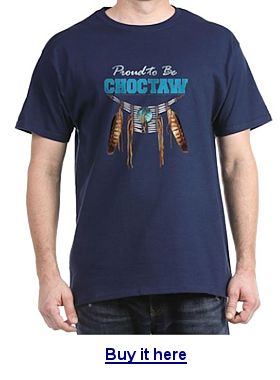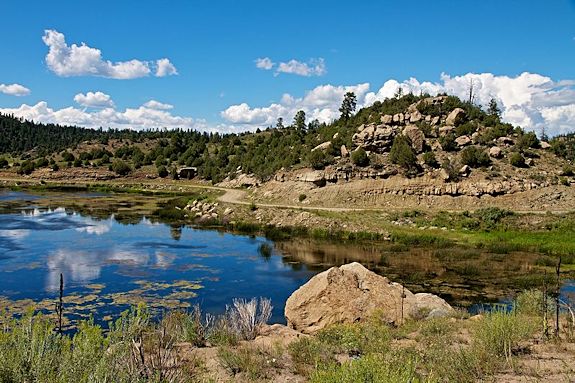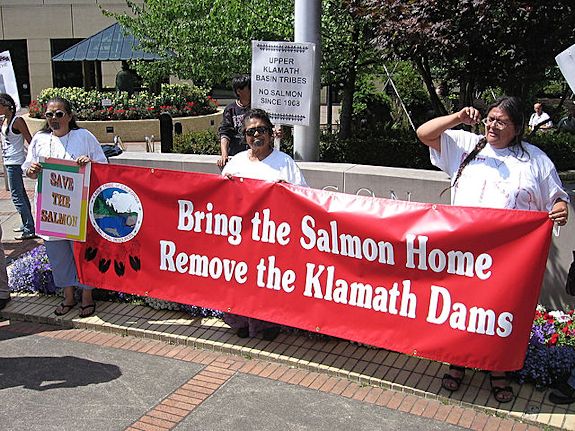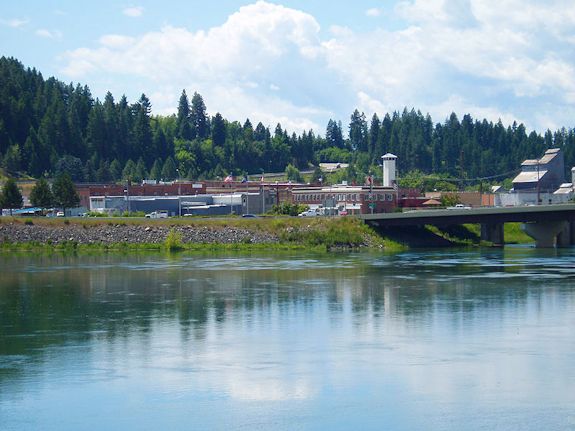The Hopland Band of Pomo Indians is a federally recognized tribe of Pomo people.
US Tribes A to Z (Federally Recognized)
US Tribes A-Z
Indigenous peoples in what is now the contiguous United States are commonly called “American Indians”, or just “Indians” domestically, but are also often referred to as “Native Americans”. In Alaska, indigenous peoples, which include Native Americans, Yupik and Inupiat Eskimos, and Aleuts, are referred to collectively as Alaska Natives.
Native Americans and Alaska Natives make up 2 percent of the U.S. population, with more than 6 million people identifying themselves as such, although only 1.8 million are recognized as registered tribal members. Tribes have established their own rules for membership, some of which are increasingly exclusive. More people have unrecognized Native American ancestry together with other ethnic groups. A minority of U.S. Native Americans live in land units called Indian reservations. Some southwestern U.S. tribes, such as the Yaqui and Apache, have registered tribal communities in Northern Mexico. Similarly, some northern bands of Blackfoot reside in southern Alberta, Canada, in addition to within US borders.
A number of Kumeyaay communities may be found in Baja California del Norte.
Indian tribes are unique legal entities in the United States and are distinct political communities with extensive powers of self-government. Tribal sovereignty predates the U.S. government. Treaties, federal statutes and executive agreements over the past 200 years have established a special trust relationship between tribes and the federal government. The federal Bureau of Indian Affairs (B.I.A.) has been designated by the Secretary of the Interior as the primary agency to protect tribal interests and administer trust responsibilities.
Federal Tribes (F)
Federal tribes followed by (F) have recognition by the US. Government. Recognized Indians are those who are enrolled members of tribes from whom the federal government has acknowledged treaty or statutory obligations. There are 566 federally recognized indian tribes (as of January 14, 2015).
State Tribes (S)
State tribes marked with an (S) have recognition at the state level, but may or may not have federal recognition by the US Government.
Terminated Tribes (T)
During the 1950s, in a move to assimilate Native Americans into mainstream America, the U.S. government ended federal trusteeship of roughly three percent of the country’s Native American population through a process called termination. Of the terminated tribes, 62 were native to Oregon and 41 were in California. Others were in Kansas, Minnesota, Montana, Nebraska, New York, North Dakota, Utah, and Wisconsin. Even though the tone of the termination legislation was emancipation, the net effect of the policy on terminated tribes was cultural, political and economic devastation. In recent years, however, vigorous efforts have been mounted by terminated tribes to reestablish or restore the trust relationship. Terminated tribes are marked with (T).
UnRecognized Tribes (U)
Un-recognized tribes marked with (U) are historical indian tribes or people with Indian ancestry who are not recognized by either the Federal Government or any state government entity. Unrecognized Indians include those from tribes with whom federal relations have been severed by congressional action (termination) and those whose tribe has never been recognized by the federal government. They also include persons of indian ancestry who, for fear of persecution, fled or hid their Indian ancestry during the time the early Indian Rolls were being taken in the mid to late 1800s and early 1900s.
Petitioning Tribes (P)
Many of the Terminated Tribes and Unrecognized tribes are today petitioning to again be recognized as tribal governments with sovereign nation status or to be included in tribes they were previously terminated from. Those petitioning tribes are marked with a (P), where known. Inclusion on this site does NOT mean an endorsement has been made for recognition of any particular tribe. All entities claiming to be US indian tribes that we are aware of have been included for completeness. Where known, we have indicated official tribal status with our Key Chart. In many cases we have not verified the validity of the claim of tribal status, and leave it to your own common sense or further research to validate tribal claims.Alternate names in parenthesis are either older names that were once used to identify that tribe, shortened common names, or they are misspellings.
Most Recent Articles:
Houlton Band of Maliseet Indians
23 ViewsThe Houlton Band of Maliseet Indians belonged to the loose confederation of eastern American Indians known as the Wabanaki Alliance, together with the Passamaquoddy, Penobscot, Mi’kmaq, and Abenaki Indians. The Maliseet live primarily in Canada, especially New Brunswick, with one band across the border in nearby Maine.
Iipay Nation of Santa Ysabel
23 ViewsThe Iipay Nation of Santa Ysabel is a part of the larger Kumeyaay people that once populated much of the geographic area of present day San Diego County. On November 20, 2007, the Iipay Nation of Santa Ysabel, by a majority ballot vote of the General Membership, certified the adoption of a new Tribal Constitution for self-governance.
The Inaja Band of Diegueno Mission Indians of the Inaja and Cosmit Reservation is a federally recognized tribe of Kumeyaay Indians, who are sometimes known as Mission Indians.
The Ione Band of Miwok Indians is a federally recognized tribe of Miwok people in Amador County, California.
Iowa Tribe of Kansas and Nebraska
23 ViewsThe Iowa Tribe of Kansas and Nebraska is located along the Missouri River on an approximately 2,100-acre reservation straddling the borders of northeast Kansas (Brown County) and southeast Nebraska (Richardson County).
Iowa Tribe of Oklahoma
23 ViewsThe Iowa Tribe of Oklahoma is a federally recognized indian tribe which split off from the main Iowa Tribe now located in Kansas and Nebraska in the late 1800s.
Jackson Band of Miwuk Indians
25 ViewsThe Jackson Band of Miwuk Indians was first recognized by the Federal Government in 1898. The Tribe held a meeting in 1979 and established a formal government. They are a federally recognized tribe of Miwok people.
Jamestown S’Klallam Tribe
23 ViewsThe Jamestown S’Klallam Tribe is a federally recognized Salish indian tribe that resides on the northeastern portion of the Olympic Peninsula, in northwestern Washington.
Jamul Indian Village of California
23 ViewsSixty-five years ago a small band of Tipai found themselves with six acres upon which to settle – a tiny plot in the rolling hills east of the town of Jamul. After 65 years of tenacious endurance, the Jamul Indian Village of California was rewarded with their village finally being declared a reservation and federally recognized indian tribe.
Jena Band of Choctaw Indians
23 ViewsThe Jena Band of Choctaw Indians are native to the Southeastern United States and members of the Muskogean linguistic family, which traces its roots to a mound-building, maize-based society that flourished in the Mississippi River Valley for more than a thousand years before European contact. They are a federally recognized indian tribe.
Jicarilla Apache Nation
28 ViewsThe Jicarilla Apache Nation is located in the mountains and rugged mesas of northern New Mexico. The Jicarilla people were one of six southern Athabaskan groups who migrated out of Canada sometime between 1300 AD and 1500 AD.
The Kaibab Band of Paiute Indians are members of the Southern Paiute Nation and a federally recognized indian tribe.
The Kalispel Indian Community of the Kalispel Reservation are a federally recognized tribe of Lower Kalispel people, located in Washington.
Karuk Tribe Index
23 ViewsThe Karuk tribe is the second largest indigenous tribe in the state of California. Most Karuk people are enrolled in the Karuk Tribe; however, some are enrolled in the Cher-Ae Heights Indian Community of the Trinidad Rancheria, located in Humboldt County, California. The Quartz Valley Rancheria of Karok, Shasta, and Upper Klamath Indians is also a federally recognized tribal entity.
The Kashia Band of Pomo Indians of Stewarts Point Rancheria is a Federally Recognized Pomo Tribe located in Sonoma County of California. The Kashia Band of Pomo Indians were the first inhabitants of the coastal Sonoma County area around Fort Ross.
Kaw Nation
23 ViewsThe Kaw Nation is a federally recognized indian tribe in Oklahoma that were originally from the Midwest area that is now Kansas. The state of Kansas is named after this tribe.
Kewa Pueblo
23 ViewsThe Kewa Pueblo, formerly known as Santo Domingo Pueblo, is one of the best known tribes of the southwest, largely because of their skill in marketing their jewelry and other crafts. The Kewa Pueblo is fifth in population of the nineteen New Mexico pueblos, and is generally considered the most conservative in terms of customs and culture.
Keweenaw Bay Indian Community
23 ViewsThe Keweenaw Bay Indian Community is a federally recognized Ojibwe tribe in Michigan.
Kialegee Tribal Town
23 ViewsKialegee Tribal Town is headquartered in Wetumka, Oklahoma. It is a federally recognized indian tribe that was once part of the Muscogee Creek Confederacy.
The Kickapoo Tribe of Indians of the Kickapoo Reservation in Kansas is a federally recognized tribe in the United States. The Kickapoo were once one of many Great Lakes Tribes that occupied the western portion of the woodland area in southern Michigan near Lake Erie until the Iroquois forced them out during the Iroquois War of 1641-1701.
Kickapoo Tribe of Oklahoma
23 ViewsThe Kickapoo Tribe of Oklahoma is one of three federally recognized Kickapoo tribes in the United States. There is a fourth in Mexico.
Kickapoo Traditional Tribe of Texas
23 ViewsThe Kickapoo Traditional Tribe of Texas were originally an offshoot of the Shawnee tribe (“Kickapoo” is thought to be a corruption of a Shawnee word for “wanderers,”) but their language and customs have more in common with the neighboring Fox and Sauk.
Kiowa Indian Tribe of Oklahoma
35 ViewsAlthough in some ways the Kiowa Indian Tribe of Oklahoma displayed a typical Plains Indian culture, they had an effective and well organized military strategy and were thought to be one of the most warlike tribes.
Klamath Tribes
23 ViewsThe Klamath Tribes include Klamath, Modoc, and Yahooskin, another band of Klamath erroneously believed to be a group of Paiute or Shoshone because they were designated the Yahooskin Band of Snake in the 1864 treaty. They all lived in the Klamath Basin of Oregon.
Kootenai Tribe of Idaho
23 ViewsThe Kootenai Tribe of Idaho is a federally recognized tribe indigenous to the Northwest Plateau.
La Jolla Band of Luiseno Indians
23 ViewsLa Jolla Indian Reservation is home to the Luiseno (Payomkawichum) people, and has been for at least the last 10,000 years. Today, there are about 700 La Jolla Band of Luiseno Indians tribal members located in the foothills of the beautiful Palomar Mountains, on the banks of the San Luis Rey River, in the semi-wilderness now known as the La Jolla Indian Reservation.
The La Posta Band of Mission Indians have their homeland under the shadow of 6,270-foot-high Mt. Laguna and at the eastern edge of Cleveland National Forest in a 3,756-acre park-like highland. La Posta has occasional residents, who value and guard their privacy. The one entry road is dusty or muddy, and is fenced off from intruders.
The Lac Courte Oreilles Band of Lake Superior Chippewa Indians of Wisconsin people are one band of the large Ojibwe Nation that originally occupied the upper eastern woodlands area of the North American continent.
The Lac du Flambeau Band of Lake Superior Chippewa Indians is primarily associated with the Lac du Flambeau Reservation in Wisconsin. The Lake Superior Chippewa (Anishinaabe: Gichigamiwininiwag) were a large historical band of Ojibwe (Anishinaabe) Indians living around Lake Superior in what is now the northern parts of Michigan, Wisconsin, and Minnesota.
The Lac Vieux Desert Band of Lake Superior Chippewa Indians were originally part ofthe Keweenaw Bay Band and resided in the Watersmeet area. They received federal recognition as a separate tribe in 1988.
The Las Vegas Tribe of Paiute Indians of the Las Vegas Indian Colony is a tribe of Southern Paiute Indians.
Little River Band of Ottawa Indians
23 ViewsThe Little River Ottawa descend from members of certain Grand River Ottawa Bands who lived in villages located on the Manistee River, Pere Marquette River, and at several villages on the Grand River system in Michigan.
On Sept. 21, 1994, the Little Traverse Bay Bands of Odawa Indians (LTBB) was federally reaffirmed under Public Law 103-324, signed into law by President Clinton.
Koi Nation of Northern California
23 ViewsThe Koi Nation of the Lower Lake Rancheria is a federally recognized tribe of Southeastern Pomo people located in Sonoma County, California.
Los Coyotes Band of Cahuilla and Cupeno Indians of the Los Coyotes Reservation is a federally recognized tribe of Cahuilla and Cupeño Indians, who are Mission Indians located in California.
The Lovelock Paiute Tribe of the Lovelock Indian Colony is a federally recognized tribe of Northern Paiute Indians.
The Lower Brule Sioux Tribe is a sovereign nation defined by its government-to-government relationship with the United States. The Tribe was chartered under the Indian Reorganization Act of June 18, 1934.
Lower Elwha Tribal Community
23 ViewsThe Lower Elwha Tribal Community is a federally recognized nation in Washington state in the Pacific Northwest of the United States. The tribe is part of the larger Klallam culture, one of the Coast Salish peoples.
The Lower Sioux Indian Community is a federally recognized Indian tribe located in south central Minnesota in Redwood County, approximately two miles south of Morton.
Lummi Tribe of the Lummi Reservation
28 ViewsThe federally recognized Lummi Nation is the third largest tribe in Washington State. The Lummi are the original inhabitants of Washington’s northernmost coast and southern British Columbia. For thousands of years, they have lived on the shores and waters of Puget Sound.
Lytton Rancheria of California
23 ViewsThe Lytton Band of Pomo Indians is a federally recognized tribe of Achomawi, Nomlaki and Pomo Indians. The tribe was founded in 1937 by Bert Steele, who was one-quarter Achomawi and part Nomlaki, and his wife, a Pomo from Bodega Bay, when they successfully petitioned the U.S. Office of Indian Affairs for the right to build on a 50-acre (200,000 m2) plot north of Healdsburg, California north of Lytton Station Road after Steele’s home was destroyed in a flood. Along with his brother-in-law, John Myers, and his wife, Mary Myers Steele (both Pomo from Sonoma), he moved onto the land, which the government had set aside for Native Americans. This land became the Lytton Rancheria and the namesake for the tribe.
The Makah Indian Tribe of the Makah Indian Reservation are a federally recognized tribe of Makah Indians. Linguistically and ethnographically, they are closely related to the Nuu-chah-nulth and Ditidaht peoples of the West Coast of Vancouver Island, who live across the Strait of Juan de Fuca in British Columbia, Canada.
The Manchester Band of Pomo Indians of the Manchester Rancheria is a federally recognized tribe of Pomo Indians in California.
The Manzanita Band of Diegueno Mission Indians of the Manzanita Reservation are a federally recognized Kumeyaay band in California.
Mashantucket Pequot Indian Tribe
23 ViewsThe Mashantucket Pequot Indian Tribe is an Eastern Woodland people with traditional homelands in what is now known as Southeastern Connecticut. As the first native people within the borders of the continental United States to suffer an attempted genocide by Puritan Colonists in 1637, they have one of America’s oldest Indian reservations, established in 1666.
Mashpee Wampanoag Tribe
23 ViewsThe Mashpee Wampanoag Tribe is is one of two federally recognized tribes of Wampanoag people in Massachusetts. They were one of the first tribes encountered by Europeans, but did not receive federal recognition as a tribe until 2007.
Federal recognition of the Match-e-be-nash-she-wish Band of Pottawatomi Indians of Michigan became effective on August 23, 1999. The tribe says they are a body of mixed-blood Chippewa, Ottawa, and Pottawatomi who trace their descent from principal Potawatomi chief, Match-e-be-nash-she-wish.
The Mechoopda Indian Tribe of Chico Rancheria are a federally recognized tribe of Maidu people located in California. Their federal recognition was terminated in 1967, but reinstated in 1992.
Menominee Indian Tribe of Wisconsin
23 ViewsThe Menominee Indian Tribe of Wisconsin, or “wild rice people,” are a federally recognized Indian tribe who have lived in Wisconsin for millenia. They are the oldest Native American community that still lives there.




